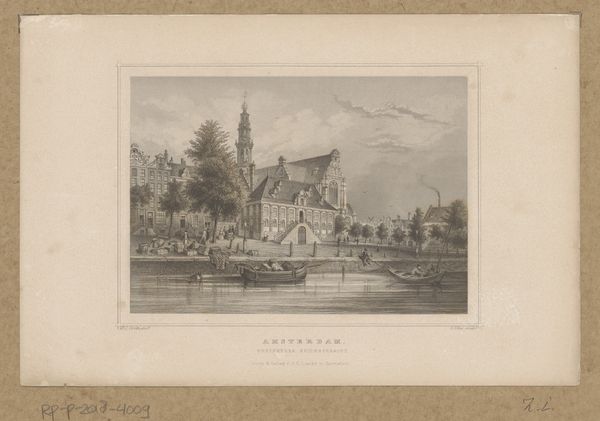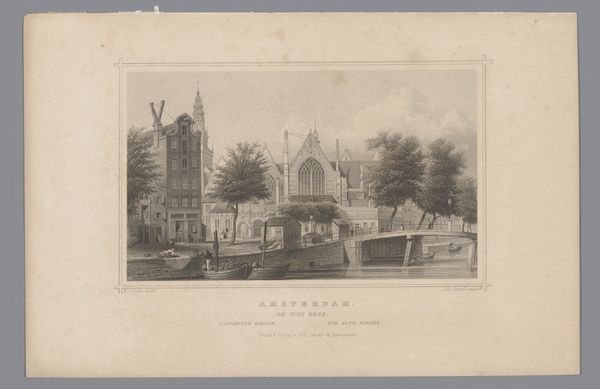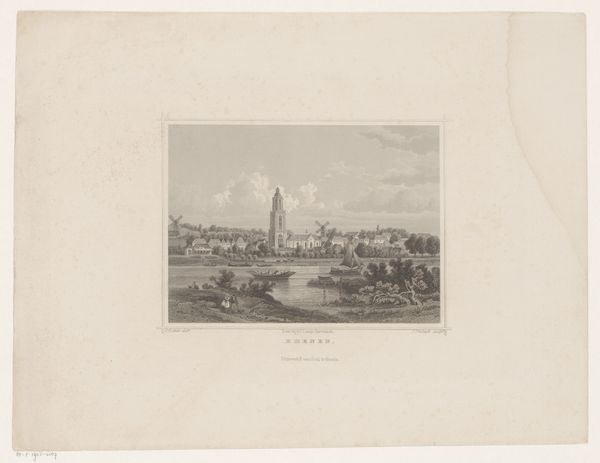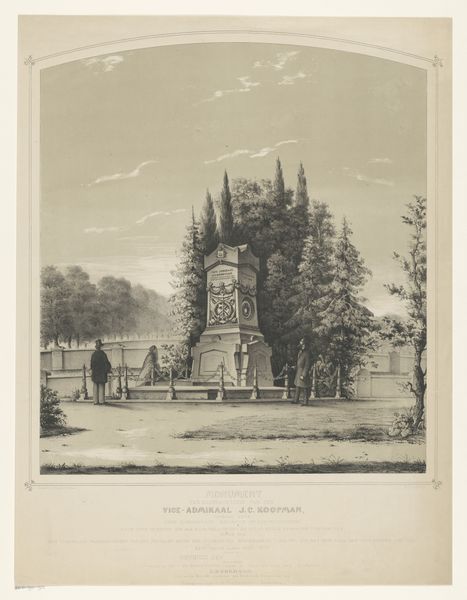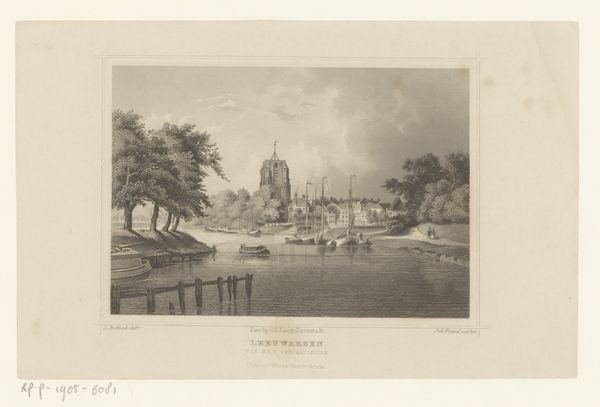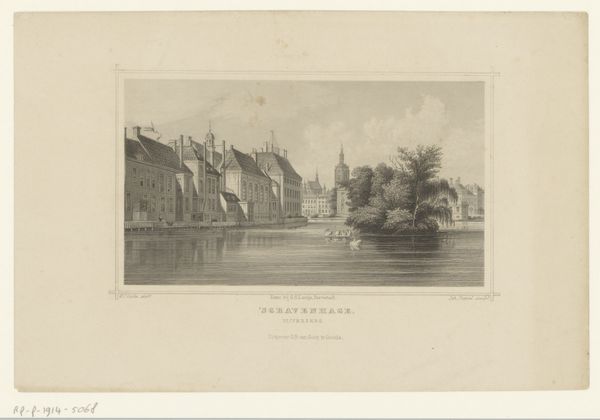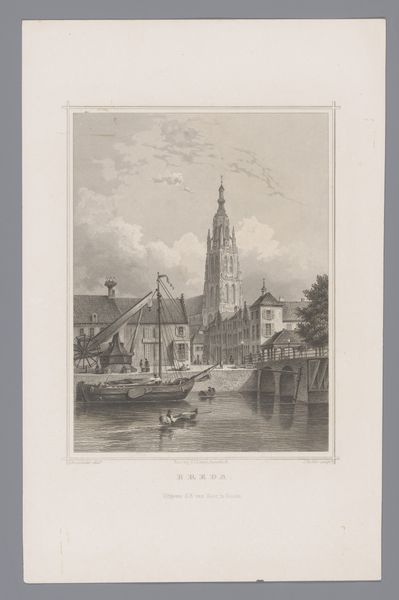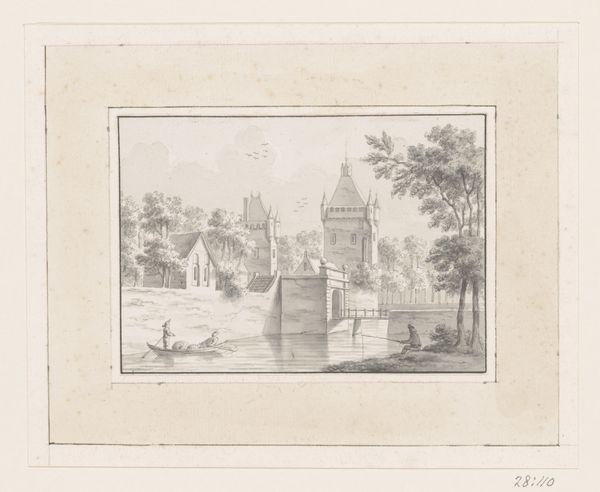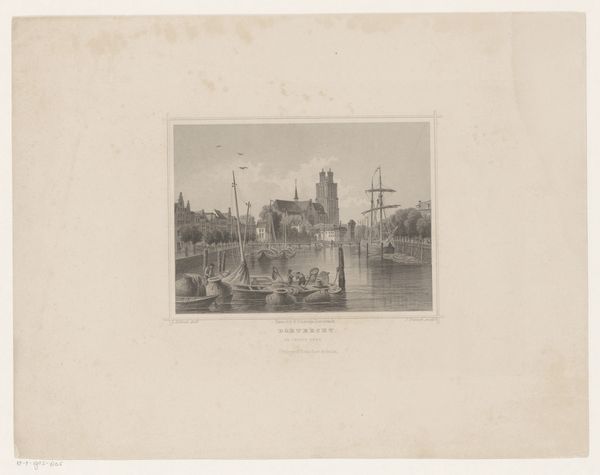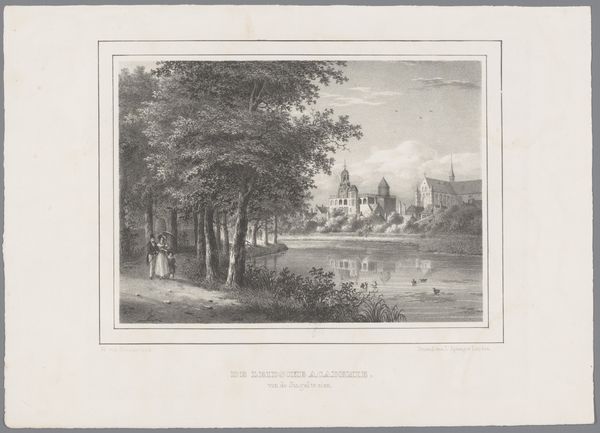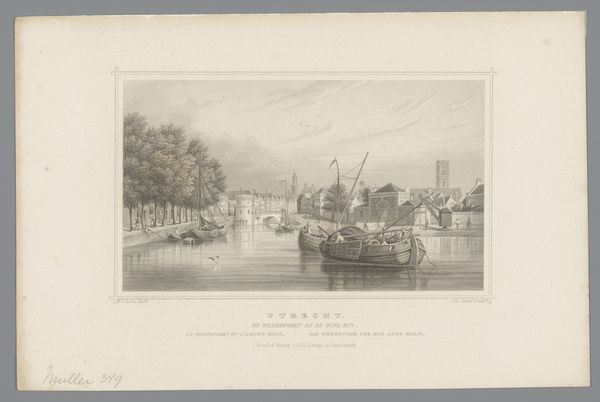
print, photography, engraving
#
dutch-golden-age
# print
#
landscape
#
photography
#
cityscape
#
engraving
#
realism
Dimensions: height 256 mm, width 169 mm
Copyright: Rijks Museum: Open Domain
Curator: Georg Michael Kurz created this engraving, titled "Gezicht op de Vismarkt te Leiden," which translates to "View of the Fish Market in Leiden," around 1855. Editor: It’s instantly evocative—a sense of tranquility mixed with a hint of melancholy. The grayscale rendering and the composition, with its receding planes, give it a very nostalgic feeling. Curator: Yes, it captures a pivotal moment in Leiden’s history, a visual document of urban life transitioning under industrial and social pressures. Consider how the fish market would have functioned, a central public space not just for commerce but also community interaction. Prints like these served a vital role in disseminating knowledge and shaping public perceptions of the city itself. Editor: I'm drawn to that central tower, though. Its verticality pierces the horizontal calm of the water and quayside. In my mind, it represents more than just a physical landmark; it symbolizes stability, faith, and the enduring spirit of the city amidst change. Towers have long represented humanity’s reaching for the divine, or a higher order. Curator: Absolutely, it functions as both a symbol of civic pride and the deep rooted connection of the city. The deliberate rendering of ordinary, local sites served to instill that specific notion and Dutch identity. And while a humble fishmarket might be the motif, the intention of these prints also fed a need for the exotic from afar. Editor: Looking at the figures in the boat... Do they hold any additional symbolic weight for you? Or is this purely genre, just capturing a moment of daily life? Curator: Well, you can consider the broader themes tied up with Dutch genre painting of that time - the values they hoped to project, that would show life as civil and cultured with trade flourishing. They certainly wanted this view to project stability rather than hardship. Editor: So, the artist used the symbolic language of their day in a work intended for mass consumption? It is still nice to stop and see this artwork today. Thank you. Curator: My pleasure. I find the print gives one a chance to understand a city, and how an era was marketed through visual symbolism.
Comments
No comments
Be the first to comment and join the conversation on the ultimate creative platform.
